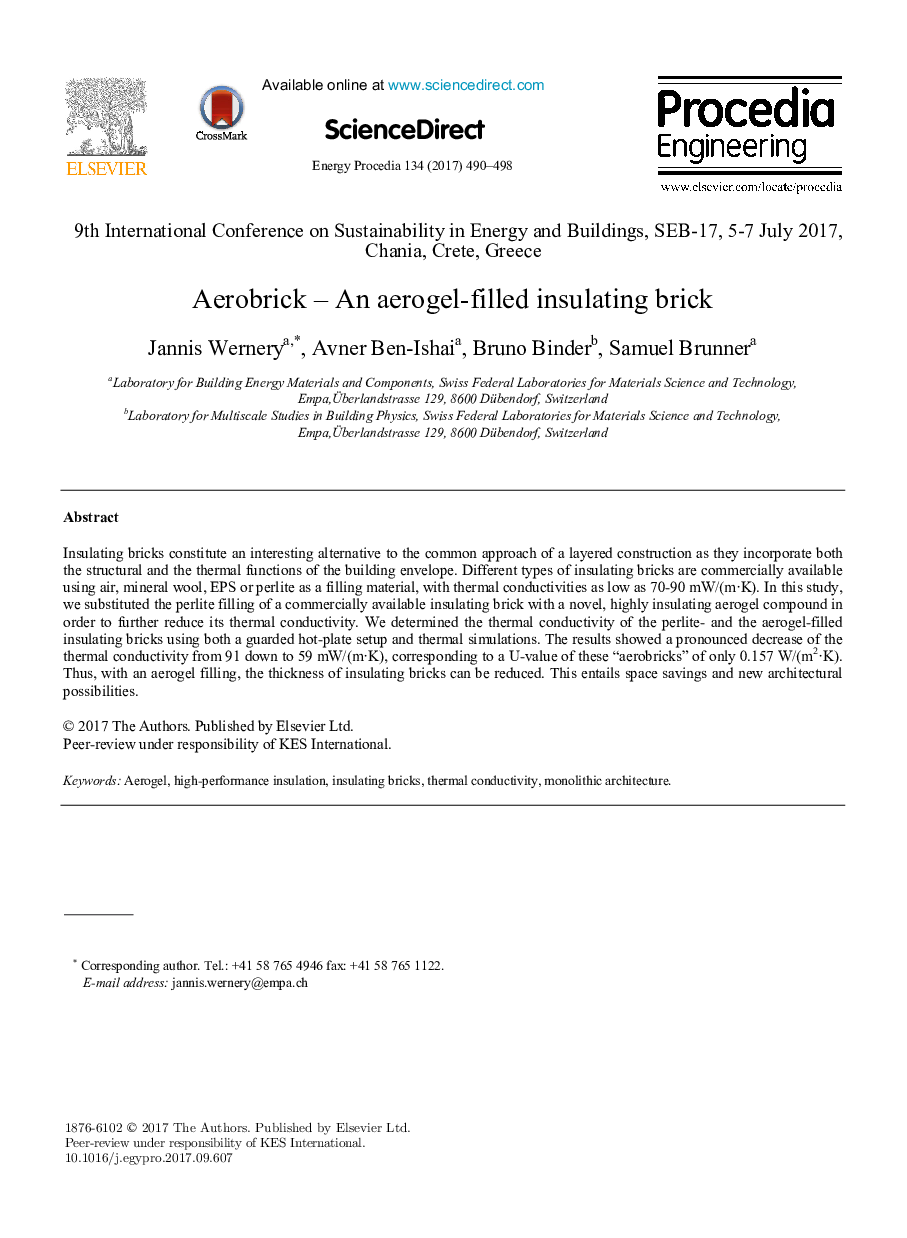| Article ID | Journal | Published Year | Pages | File Type |
|---|---|---|---|---|
| 7918897 | Energy Procedia | 2017 | 9 Pages |
Abstract
Insulating bricks constitute an interesting alternative to the common approach of a layered construction as they incorporate both the structural and the thermal functions of the building envelope. Different types of insulating bricks are commercially available using air, mineral wool, EPS or perlite as a filling material, with thermal conductivities as low as 70-90 mW/(m·K). In this study, we substituted the perlite filling of a commercially available insulating brick with a novel, highly insulating aerogel compound in order to further reduce its thermal conductivity. We determined the thermal conductivity of the perlite- and the aerogel-filled insulating bricks using both a guarded hot-plate setup and thermal simulations. The results showed a pronounced decrease of the thermal conductivity from 91 down to 59 mW/(m·K), corresponding to a U-value of these “aerobricks” of only 0.157 W/(m2·K). Thus, with an aerogel filling, the thickness of insulating bricks can be reduced. This entails space savings and new architectural possibilities.
Keywords
Related Topics
Physical Sciences and Engineering
Energy
Energy (General)
Authors
Jannis Wernery, Avner Ben-Ishai, Bruno Binder, Samuel Brunner,
